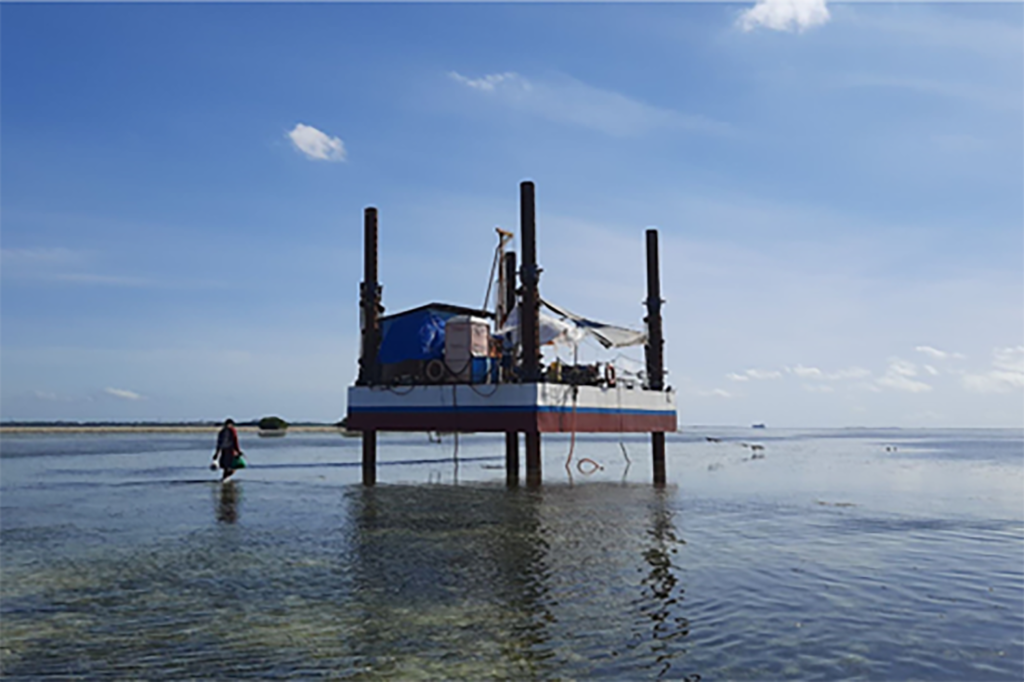About the Project
4 BH to 40m deep below the sea bed. <5m deep water depth.
Date: December 19 to January 21
Vessel Used: Jack-Up Pontoon #2 with PS suspension equipment

Nearshore PS-Suspension logger is a reliable and precise test in order to accurately measure in situ dynamic soil parameters.
SRGEC uses the PS Logger Probe equipment from Roberston GEO.
SRGEC uses a jack-up barge to prevent many undesired effects on the readings and data (movement, wave, noise, etc.). Furthermore, the risk of breaking the probe (lost and damaged equipment) is considerably lower when using jack-up barges.
The PS-Suspension tests are carried out through a moon pool in the deck of the jack-up rig inside a borehole.
The PS Logger probe contains a unique design of a powerful hammer source and two receivers, separated by acoustic damping tubes.
To acquire data, the probe is stopped at the required depth and the source is fired under surface command. Firing causes a solenoid-operated shuttle aligned across the borehole axis to strike plates on opposite sides of the probe in turn, setting up a pressure doublet in the surrounding fluid.
The resultant fluid motion produces a tube wave at the borehole wall with a velocity close to the shear velocity of the form together with a compressional wave.
As the waves propagate parallel to the borehole axis, they set up corresponding fluid movements that are detected by the two neutral buoyancy 3D hydrophone receivers and geophones, allowing the wave velocity to be determined.
The PS Logger probe is a low-frequency acoustic sonde designed to measure compressional and shear-wave velocities in soils and soft rock formations.
